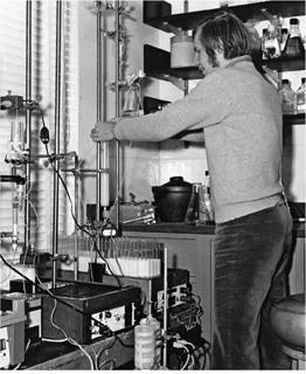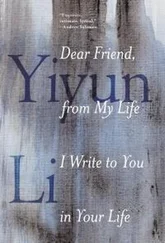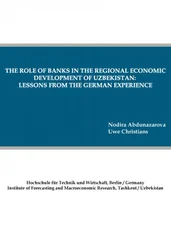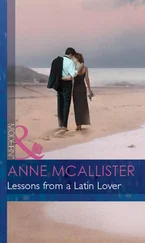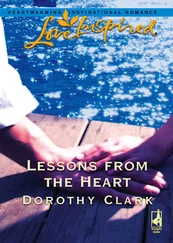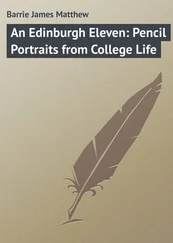James Watson - AVOID BORING PEOPLE - Lessons from a Life in Science
Здесь есть возможность читать онлайн «James Watson - AVOID BORING PEOPLE - Lessons from a Life in Science» весь текст электронной книги совершенно бесплатно (целиком полную версию без сокращений). В некоторых случаях можно слушать аудио, скачать через торрент в формате fb2 и присутствует краткое содержание. Жанр: Биографии и Мемуары. Описание произведения, (предисловие) а так же отзывы посетителей доступны на портале библиотеки ЛибКат.
- Название:AVOID BORING PEOPLE: Lessons from a Life in Science
- Автор:
- Жанр:
- Год:неизвестен
- ISBN:нет данных
- Рейтинг книги:5 / 5. Голосов: 1
-
Избранное:Добавить в избранное
- Отзывы:
-
Ваша оценка:
- 100
- 1
- 2
- 3
- 4
- 5
AVOID BORING PEOPLE: Lessons from a Life in Science: краткое содержание, описание и аннотация
Предлагаем к чтению аннотацию, описание, краткое содержание или предисловие (зависит от того, что написал сам автор книги «AVOID BORING PEOPLE: Lessons from a Life in Science»). Если вы не нашли необходимую информацию о книге — напишите в комментариях, мы постараемся отыскать её.
AVOID BORING PEOPLE: Lessons from a Life in Science — читать онлайн бесплатно полную книгу (весь текст) целиком
Ниже представлен текст книги, разбитый по страницам. Система сохранения места последней прочитанной страницы, позволяет с удобством читать онлайн бесплатно книгу «AVOID BORING PEOPLE: Lessons from a Life in Science», без необходимости каждый раз заново искать на чём Вы остановились. Поставьте закладку, и сможете в любой момент перейти на страницу, на которой закончили чтение.
Интервал:
Закладка:
On July 10, 1973, I went to University Hall to see the economist Henry Rosovsky, who had just replaced his fellow economist John Dunlop as dean of the Faculty of Arts and Sciences. Dunlop had hurriedly taken on the role during the April 1969 University Hall occupation when Franklin Ford suffered a mild stroke. I was then BMB's new chairman, a task I was to have only until February 1975, when Matt Meselson replaced me. During my brief tenure, I wanted to ensure that Harvard somehow acquired animal cell facilities equal to those MIT would have in eighteen months. That morning with Rosovsky, I stressed how important it was for him to ensure Klaus Weber's return to Harvard, a commitment Klaus could not make until up-to-date animal cell facilities were available in the Biological Laboratories or, better still, in the proposed new animal cell annex. Six weeks later, I took Klaus to Henry's offices to give Henry personal assurance that Klaus would come back to Cambridge if he could continue the experiments he and Mary Osborn had started at Cold Spring Harbor. By then Harvard decided to resubmit its application to NCI for construction monies, now opting for a completely separate new building on roughly the same site proposed for the annex. Several of the Biology
Department faculty had become queasy about living with possible biohazards in their midst.Harvard's president, Derek Bok, became actively involved on November n when the ad hoc committee met to consider whether Howard Temin should be offered tenure. I appeared as an early witness, sensing there would be no objection. Soon the question became whether he would agree to come. To answer it, he and his wife came to visit Harvard in mid-December. Their main host was Matt Meselson, a close friend of Howard's since their days together at Caltech in the late 1950s. I was worried from the start that his population geneticist wife, Rayla, would not want to leave the University of Wisconsin at Madison. Matt, however, thought we had a good chance of getting them to join us.
In January 1974, Henry Rosovsky scheduled a day to hear everyone out about the proposed NCI grant resubmission. Carroll Williams expressed concern that receipt of NCI monies would force Harvard to use all of the government-financed space for work with cultured animal cells and their viruses. If the federal funds came forth, he thought BMB should relinquish some of its space in the Biolabs to let the Cellular and Developmental Biology subdepartment increase its numbers. In contrast, I argued for Harvard's quickly recruiting several animal cell hotshots who would create a high-powered cancer center like the one at MIT. It was my belief that all outstanding research on animal cells would easily fall within the purview of the NCI mission. Until we understood how cells sent out and received molecular signals to divide, we could not get at the essence of cancer, and understanding the mechanism was plenty to keep an animal cell group busy. I then told Henry the building would function best with a director reporting directly to the dean, which Carroll Williams resisted, seeing it would diminish the power of department chairmen. But I felt the chair's usual three-year term did not allow him or her to take on necessary long-term funding objectives.
The animal cell building proposal went to NCI in January just ahead of the deadline. The cover letter, signed by Derek Bok, was essentially written by me, with the requested construction money adjusted to $5.76 million, reflecting our architect's prediction of further
inflation, which was then bedeviling the entire American economy. In its final form, the proposal was my vision—not Carroll Williams's—of how animal cell science should proceed at Harvard. But its realization much depended upon whether Howard Temin joined our faculty. More than a month of uncertainty passed before Howard finally turned us down, saying his wife saw her life diminished by moving to Harvard. No job she might find in Boston would be as good as the one she had with the population geneticist Jim Crow in Madison. To keep our NCI application alive, an offer was made to the English retrovirologist Robin Weiss. But soon he turned us down, as he had MIT the year before. My dominos continued to fall when Klaus Weber in early April formally accepted an offer to head a Max Planck Institute in Göttingen, Germany. It would provide even better facilities than could be fixed up for him within the confines of the Bio-labs. Harvard then had no choice but to tell NCI it no longer could claim a future in tumor viruses.Klaus's decision was already 90 percent made when Derek and Sissela Bok invited Liz and me for a late March Friday night dinner at Elmwood, the gracious old wooden house just off Fresh Pond Parkway where they lived with their four children. Upon Derek's becoming president, they chose not to live in the formal Quincy Street fishbowl successively occupied by Lowell, Conant, and Pusey Two years younger than I, Derek had concluded three very successful years as dean of Harvard's Law School. A graduate of Stanford, he was the first president of Harvard not a product of the college. That evening I tried to forget about the animal cell biology fiasco and Harvard's lack of a tumor virus future. I realized there was no longer a good reason for Cold Spring Harbor and Harvard to remain closely connected. Derek graciously kept our conversation on other matters, knowing only too well that my heart was now mostly at Cold Spring Harbor. Harvard had no one leading it into the future in the way David Baltimore was blazing the way for MIT biology.
Two weeks later, I drove over to the glass-faced MIT biology building for a meeting hosted by Paul Berg. There, with David Baltimore's help, he assembled a small group to discuss implications of the powerful new recombinant DNA technology developed at Stanford. Phil
Handler, the president of the National Academy of Sciences, had asked Paul to come up with an appropriate response to a letter published in the September 21,1973, issue of Science. The academy had been called on to offer guidelines for recombinant DNA experiments that might create biohazards not only for the lab worker but also for the general public. That morning our small group, which included Dan Nathans and Norton Zinder, concluded the matter would best be dealt with by a much larger group assembled at the same Asilomar, California, site where we had considered potential biohazards of tumor virus research the year before. Until Asilomar II could be held, likely early the next year, we proposed a worldwide moratorium on recombinant DNA experiments in a letter to the journals Nature and Science. I then visualized the Lab publishing Asilomar II's proceedings. Unlike our first biohazard book, this one I expected to make real money.All the world's major tumor virologists assembled three months later for the Lab's annual early June symposium. Joe Sambrook organized the DNA tumor virus sessions, and David Baltimore put together the ones on RNA retroviruses. Between Renato Dulbecco's introductory talk and David's concluding summary, there were 116 presentations, out of which 101 manuscripts were generated. They would fill our first two-volume symposium proceedings, consisting of almost twelve hundred pages. Though no scientific bombshell exploded, the meeting's highly charged atmosphere made it likely that a deep truth would emerge at any moment. More presentations came from Cold Spring Harbor scientists than from the faculty of any other institution, even London's better-funded Imperial Cancer Research Labs in Lincoln's Inn Fields. Klaus Weber and Mary Osborn notably reported upon their purification of the SV40 antigen. In their talk they provided strong presumptive evidence that the T antigen was the product of SV4o's A gene, one that functions early in the SV40 life cycle as well as in SV4o-transformed (cancerous) cells. Further studies might soon convincingly show it to be the primary cancer-causing genetic unit on SV4o's small circular chromosome.
Читать дальшеИнтервал:
Закладка:
Похожие книги на «AVOID BORING PEOPLE: Lessons from a Life in Science»
Представляем Вашему вниманию похожие книги на «AVOID BORING PEOPLE: Lessons from a Life in Science» списком для выбора. Мы отобрали схожую по названию и смыслу литературу в надежде предоставить читателям больше вариантов отыскать новые, интересные, ещё непрочитанные произведения.
Обсуждение, отзывы о книге «AVOID BORING PEOPLE: Lessons from a Life in Science» и просто собственные мнения читателей. Оставьте ваши комментарии, напишите, что Вы думаете о произведении, его смысле или главных героях. Укажите что конкретно понравилось, а что нет, и почему Вы так считаете.
